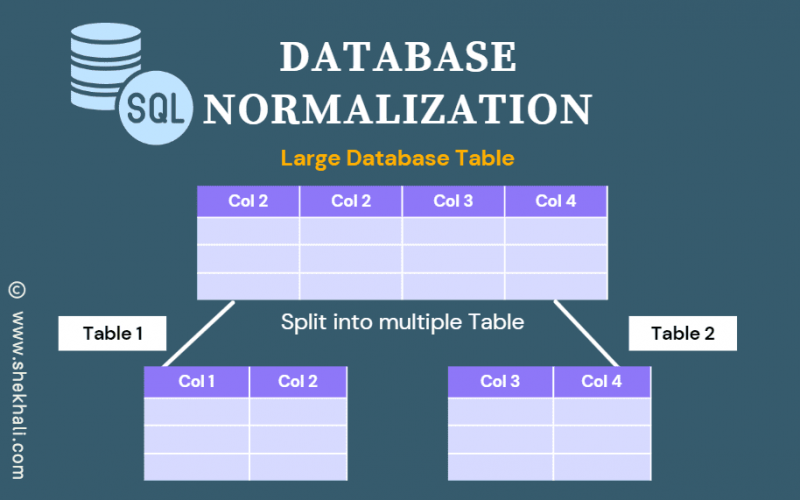Database normalization is the process of organizing data in a relational database to eliminate redundancy and dependency issues while ensuring data integrity and consistency. Normalization helps in achieving an efficient database design that minimizes data duplication and allows for easier data management and manipulation. Here are some normalization techniques and best practices:
- First Normal Form (1NF):
Ensure that each table in the database has a primary key that uniquely identifies each row (record). Eliminate duplicate rows and ensure atomicity of data by storing only single values in each column. Avoid storing multiple values in a single column (e.g., comma-separated values). - Second Normal Form (2NF):
Apply 2NF after achieving 1NF. In 2NF, eliminate partial dependencies by creating separate tables for groups of data that depend on a subset of the primary key. Move columns that are functionally dependent on only part of the primary key to a separate table. - Third Normal Form (3NF):
Apply 3NF after achieving 2NF. In 3NF, eliminate transitive dependencies by creating separate tables for data that is dependent on non-key attributes. Move columns that depend on other non-key attributes to their own tables. - Boyce-Codd Normal Form (BCNF):
BCNF is an advanced normalization technique that goes beyond 3NF. It eliminates non-trivial dependencies between candidate keys. Apply BCNF when you have multiple candidate keys in a table and ensure that all functional dependencies are based on superkeys. - Denormalization:
While normalization is important for data integrity and consistency, there may be scenarios where denormalization is appropriate for performance optimization. Denormalization involves selectively reintroducing redundancy in the database design to improve query performance. However, it should be done cautiously, considering the trade-offs between performance gains and potential data integrity issues. - Keep Data Consistent:
Ensure that data consistency is maintained during updates, deletions, and insertions. Use referential integrity constraints, such as foreign key constraints, to enforce relationships between tables and prevent orphaned or inconsistent data. Cascading updates and deletes should be used judiciously to avoid unintended consequences. - Designing Efficient Indexes:
Create indexes on columns that are frequently used in queries to improve query performance. Consider the types of queries that will be executed, the selectivity of columns, and the trade-off between query performance and the overhead of maintaining indexes. Regularly monitor and analyze the performance of queries and indexes to identify areas for optimization. - Avoid Over-Normalization:
While normalization is important, avoid over-normalizing the database design. Excessive normalization can lead to complex queries, increased join operations, and decreased performance. Strike a balance between normalization and denormalization based on the requirements and usage patterns of the database. - Regular Maintenance and Performance Tuning:
Regularly monitor the database for performance issues, such as slow queries or bottlenecks. Optimize query execution plans, update database statistics, and consider database configuration parameters to improve performance. Perform routine maintenance tasks like backups, index rebuilds, and database optimization to ensure the ongoing health and performance of the database. - Consider Scalability:
Design the database with scalability in mind. Anticipate future growth and consider techniques like partitioning, sharding, or clustering to accommodate increasing data volumes and user loads. Plan for data archiving and purging strategies to manage long-term data growth.
It’s important to note that the level of normalization depends on the specific requirements and characteristics of the application or system being developed. Strive for a balance between normalization and performance optimization based on the specific needs of the database.
SHARE
